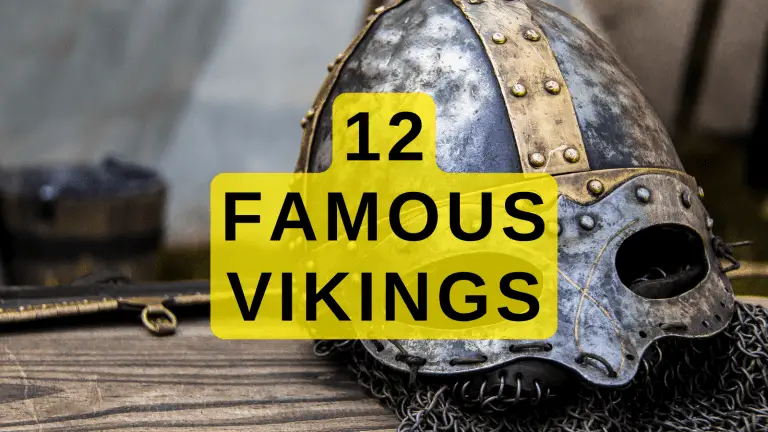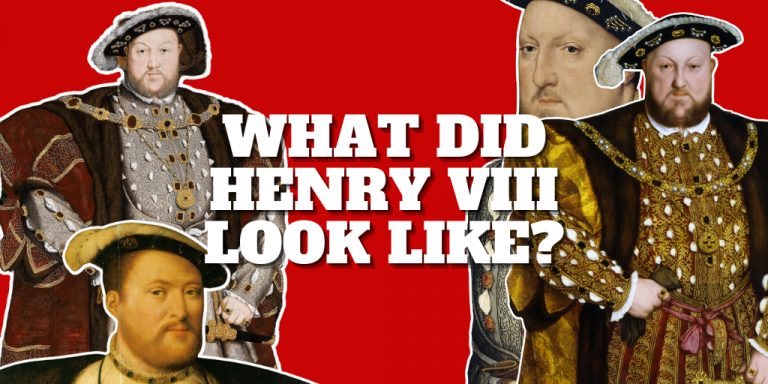The 13 Dynasties of China: A Comprehensive Timeline
Experience the rich and fascinating history of China through its 13 dynasties, each with its own unique stories and rulers. From the legendary Yu the Great, who founded the first dynasty in 2070 BC, to the last emperor, Puyi, who abdicated his throne in 1912 after the Xinhai Revolution, explore the rise and fall of these dynastic empires that shaped China’s history.
Xia Dynasty (c. 2070-1600 BC)
The Xia dynasty is the earliest mention of the legendary Chinese dynasty. Legend has it that Yu was the founder and it was he who plotted to drain the waters of a great flood to be deified as the lord of the harvest. By making the rulership hereditary in his family, Yu effectively founded the first imperial dynasty in China that persevered through 16 rulers.
During the flooding of the Yellow River, Emperor Yao appointed Yu’s father, Gun, to curb the flood. Levees were thrown up as a result as Gun worked unsuccessfully at curbing the flooding over the next 9 years, with nature winning out as the stronger force. By this time, Shun was the reigning emperor and he had Gun imprisoned for life at Yushan, a mountain between modern Donghai County in Jiangsu Province and Linshu County in Shandong Province.
Shun appointed Yu to take up his father’s work as a trusted person in the emperor’s eyes. Yu organized members of various tribes to help with the building of canals in all major rivers to lead the flood water out to sea. Legend has it that he inspired other tribes by his dedication and perseverance to contribute to the work. It took 13 years for Yu to successfully stop the floods, never returning to his home village during this time, despite passing his house three times.
Through his success in stopping the flooding, Yu was directly responsible for this destructive force negatively impacting agricultural production. The Xia tribe enjoyed increased power and Yu was made the leader of the surrounding tribes. Yu led an army to defeat the Sanmiao tribe which had abused the border tribes over a period of time, exiling them south to the area of the Han River.
An ageing Shun eventually relinquished the throne to Yu as a worthy successor and this move sees the birth of the Xia dynasty. Yu relinquished the throne to his son, Qi, when his death was imminent. This move set the precedent for the Hereditary System that is the dynastic rule, and a period of family control.
Shang Dynasty (c. 1600-1050 BC)
The Shang Dynasty saw in the Bronze Age in China and is recognised for its advances in astronomy, math, artwork, and military technology. It was during this dynasty that the earliest written records were made in Chinese history. Legend has it that the tribal chief Tang was victorious over the Xia Dynasty during the tyrant Jie’s control in 1600 B.C. in the Battle of Mingtiao, fought during a thunderstorm. Jie survived the defeat, succumbing later to illness.
The Dynasty boasts cultured bronze works, ceramics and trinkets of jade. They were the first to use piece-mould casting, creating a model of the object they wanted to create and then covering it in a clay mould.
The Shang Dynasty used a language that can be described as an early form of modern Chinese. Chinese characters inscribed on tortoise shells and cattle bone first appeared during the Shang Dynasty. Archaeologists discovered tortoise shell showing inscriptions that prove the people of the Shang Dynasty’s use of calendars and knowledge of astronomy and math. Their calendar was initially lunar based but Wan-Nien later reverted them to a solar-based calendar. He established a 365-day year and identified the two solstices.
Zhou Dynasty (c. 1046-256 BC)
It was the Zhou dynasty that characterised China’s distinctive culture and politics over the last 2 millennia, their rule having persisted over eight centuries. Archaeological evidence coming into play over time has given rise to a debate over when the Zhou started.
The Zhou dynasty was comprised of many feudal states each one as diverse as the next, which is reflected perfectly in the visual arts of the time. Xi Zhou perpetuated the art of the Shang dynasty, in particular the bronze works which show an augmented decline in variety in decoration, shapes, and craftsmanship of casting. With the Dong Zhou came the classical age of Confucius and Laozi and the unique inclusion of a variety of applied decorations such as pictorial subjects like hunting scenes, horsemen, and chariots.
Feudal capitals of the Zhou period uncovered by archaeologists more recently reveal buildings with rammed-earth floors and walls as well as two-storey buildings and observation towers. Laozi makes mention of a building extending to nine storeys. With the disintegration of the empire came the localised impressions and signs of independence in arts and culture throughout the component states. Lacquerware was honed into finely developed pieces, with gold and silver inlay evident, and the legacy of the Shang was continued in the pottery and bronze work. Funerary and rituals showed a preference for Jade ornaments and objects.
China saw much change during the Zhou dynasty, with the introduction of iron, horseback riding, ox-drawn ploughs, crossbows, and large-scale irrigation and water-control projects. Chopsticks and coinage saw the light of day and the Chinese writing system was born from its humble beginnings during the Shang period. With irrigation came an increase in crop yields in the North China Plain. New roads and canals blossomed and brought an increase in trade and the growth of towns.
Qin Dynasty (221-206 BC)
This first dynasty of Imperial China was founded by Qin Shi Huang, the First Emperor of Qin which gave the dynasty its name.
The Qin effectively unified China and was responsible for the establishment of the Great Wall and a large army of Terracotta Warriors. It saw language standardised and successful innovations in irrigation technology implemented which heightened agricultural productivity and improved prosperity. Roads and canals were built to join the unified states. The newly created wealth gave rise to the famous Great Wall built across the northern part of China to discourage invasion.
This dynasty saw a great many successful new inventions that supported the great achievements of this period. Bronze swords were improved by the invention of stronger iron swords and the 5th century BC saw the birth of the crossbow, a big improvement in the existing bows.
Han Dynasty (206 BCE-220 AD)
The second great imperial dynasty of China had a dominant effect on Chinese culture and history, and achievements in government, culture, and technology were perpetuated by future dynasties. The civil service and government structure saw the light of day during the Han dynasty and scientific advancements throughout the period were remarkable. Paper was invented as was the seismograph, and water clocks and sundials were first used to measure time. Further development took place in woven silk and lacquer work, the Yuefu which compiled descriptions of music, the Shiji which is a history written by Sima Qian, and the poetic form known as fu.
Six Dynasties Period (AD 220–589)
Six Dynasties gets its name from the six successive dynasties of South China that had their capitals at Jianye: the Wu between 222 and 280, the Dong (Eastern) Jin from 317 to 420, the Liu-Song between 420 and 479, the Nan (Southern) Qi from 479 to 502, the Nan Liang between 502 and 557, and the Nan Chen from 557 to 589. The North, meanwhile, was under the rulership of a succession of kingdoms put into place by invaders from Central Asia. The name given to the period, taken from the Nanjing states, is important because it shows the gradual departure of Chinese civilization from its centre in the North to the relatively unpopulated south.
Among the several fundamental changes during this period, the Confucian system disintegrated, and Daoism saw a marked influence while the increasingly popular Buddhism religion shaped profound and widespread change.
Medicine, astronomy, botany, and chemistry reached great heights amidst the chaos of the times. Inventions included the wheelbarrow and kites and the use of coal as a fuel. By the end of the Six Dynasties period, the control exercised by the great aristocratic families that were newly arisen in Chinese society was so well established that their domination persisted until the middle or end of the Tang dynasty. The translating of Buddhist texts saw Chinese attention directed towards literature and calligraphy. Architecture and the visual arts flourished during this period.
Sui Dynasty (581-618)
This fleeting Chinese dynasty unified the country after four centuries which saw fragmentation during which North and South China separated significantly. Artistic and cultural renaissance took centre stage during this period, climaxing in the Tang dynasty. After constant war which saw regions vying for control and the rulership of the two major kingdoms – the Northern and Southern Dynasties – in the early 500s, Yang Jian took the reins of the Northern Dynasty and established the Sui Dynasty. He became known as Emperor Wen. He raised a massive army and invaded the south and after eight years in 589, he conquered southern China, seeing to it that all of China fell under the Sui Dynasty. As a strong leader, Emperor Wen organized the government of China, imposed fair taxes, gave land to the poor, and built up grain reserves.
Emperor Wen’s son, Emperor Yang, brought about the decline of the dynasty when he took over from his father, ruling China as a tyrant. Millions of peasants died while he was emperor, due in part to forced labour on projects such as the Grand Canal and rebuilding the Great Wall. When the people rebelled in 618, the Sui Dynasty was overthrown and replaced by the Tang Dynasty.
The Sui had many accomplishments despite their lack of longevity, including:
· Rebuilding the Great Wall
· Reunification of China under one rule
· Set up a national government
· Constructing the Grand Canal and improving national transportation and trade
· Establishing grain reserves for use during famines.
Tang Dynasty (618-906)
Tang Dynasty developed a successful form of government and administration, modelled on that of the Sui establishment and the cultural and artistic development of the time was tantamount to a golden age. Despite its foundations in duplicity and murder and its plummet into anarchy. But at its apex, its art and cultural milieu early in the 8th century saw the world view it as the archetype. In 618, the aristocrat Li Yuan marched on the capital city of Chang’an with his army from the north at a time when the Sui Dynasty showed signs of collapse. Although he saw a new child emperor enthroned, Li Yuan in actual fact ruled the country as Prime Minister. He became the self-declared emperor after the assassination of Emperor Yang and so the Tang Dynasty was established.
Of the many advancements in engineering and technology during the Tang Dynasty, an important invention was indubitably woodblock printing. This form of printing saw it possible to indulge in mass production and led to increased literacy and passing on of knowledge in the empire. The Diamond Sutra became the first full-length book to be printed back in 868.
Gunpowder, porcelain, and gas cylinders for natural gas were invented during this dynasty and it saw advances in medicine, mapmaking, and clockmaking.
Five Dynasties Period, Ten Kingdoms (907-960)
Five Dynasties saw five would-be dynasties come into being in North China one after the other in rapid succession. It was known also as the period of the Ten Kingdoms (Shiguo) since 10 regimes were dominant in various regions of South China during this period.
With the advent of Woodblock printing during the precious dynasty, the first complete printing of the Confucian Classics was completed in 953. Flower painting went from being distinctively Buddhist to become a branch of nonreligious painting. In the pottery line, production of the white and black glazed wares in the North went uninterrupted during the Five Dynasties.
The centuries running up to this were a tumultuous time of instability, making progress all the more evident during this dynasty. That was until the emperor died, leaving the throne to an infant. General Zhao Kuangyin (Taizu) took the opportunity to seize the throne and the Song dynasty was born, ending the Five Dynasties period.
Song Dynasty (960-1279)
The Song Dynasty saw ancient China metamorphose into the most advanced civilization in the world until the Mongol barbarians to the north conquered the country. Historically, the Song dynasty is considered under the division into the Northern Song and the Southern Song.
Northern Song (960 to 1127)
Zhao Kuangyin, so legend has it, was begged by his troops to wear the yellow robe when they were no longer interested in serving the reigning emperor. He reused the robe three times before eventually becoming Emperor Taizu and establishing the Song dynasty. His rule saw much of China reunited. His appointment of scholars to lead his army, however, saw the army decline to the extent that the Northern Song fell to the Jin.
Southern Song (1127 to 1279)
The Northern Song was conquered by the Jin which led the son of the last emperor to flee to the south where he established the Southern Song in southern China. To keep the peace, the Southern Song paid the Jin an annual fee. After more than a century of this arrangement, an alliance between the Southern Song and the Mongols saw the Jin conquered. The Mongols then turned on the Southern Song and captured all of China.
The Song dynasty saw some of the most important inventions in the history of Ancient China such as gunpowder, moveable type, and the magnetic compass. Moveable type saw it possible to mass-print books and documents. With this and the production of millions of copies of popular books, they were suddenly widely affordable. The printing of paper money, playing cards, and calendars followed the trend.
The Song dynasty boasted the first standing navy in the world, able as they were to build ships over 300 feet long. The magnetic compass was among the improvements seen in boating and navigation.
The Song used gunpowder not only for fireworks, but also in battle, developing bombs, rockets, and fire arrows. The Mongols stole their ideas and went on to use their own weapons against them.
After helping the Song dynasty to conquer the Jin, the leader of the Mongols, Kublai Khan, conquered all of China and began his own dynasty, the Yuan dynasty.
Yuan Dynasty (1279-1368)
The Yuan Dynasty saw China under the rule of the Mongol Empire. The Chinese and the Mongol tribes of the north had fought one another for centuries and when united under Genghis Khan, the Mongols destroyed many cities during their sweep across northern China. The fighting between the Mongols and the Chinese continued until Kublai Khan took control. After allying with the Southern Song to defeat the Jin and then turning on the Southern Song, Kublai went on to conquer much of China to establish his Yuan Dynasty.
Kublai Khan recognised the Chinese ability to run a large empire. The Mongols may have been great warriors but their governing prowess took second seat to the Chinese. Kublai allowed Chinese officials to run the government, keeping watch over them because he did not have much trust in his former enemy.
Kublai encouraged outside and international trade and communications beyond China, welcoming people from all over the world, notably the Venetian Marco Polo. Freedom of religion was allowed, too, including Confucianism, Islam, and Buddhism.
The Yuan Dynasty survived a shorter time than any of the major Chinese Dynasties, weakening after Kublai Khan’s death. Kublai’s heirs began to squabble for power and the government was soon corrupt. Chinese rebel groups rose up against the Mongols. In 1368, the Buddhist monk Zhu Yuanzhang led the rebels who overthrew the Yuan and the Ming Dynasty was established.
Ming Dynasty (1368-1644)
The last of the great Chinese dynasties, the Ming was established when the Yuan Dynasty was overthrown. The Yuan Dynasty was set up by the Mongols after they conquered China a century before.
This era rang in many large civil engineering projects such as:
· The Great Wall of China as we see it today was the result of the rebuilding by the Ming Dynasty.
· The Grand Canal was rebuilt, impacting trade and boosting the economy.
· Forbidden City inside the capital city of Beijing covered over 185 acres of land with nearly 1000 buildings and was the emperor’s palace.
Emperor Chengzu, the third emperor of the Ming dynasty, moved the capital to Beijing and was responsible for the building of the Forbidden City. Known as the Yongle Emperor, he rebuilt the Grand Canal and increased trade and diplomacy abroad.
Zheng He visited extensively abroad with the Chinese navy as a great Chinese explorer. By order of Emperor Chengzu, he travelled throughout Southeast Asia and the Middle East. After visiting Africa, he returned from Somalia with a giraffe for the Emperor.
Qing Dynasty (1644-1912)
The Qing or Ch’ing Dynasty was ultimately the last of the imperial dynasties in China. Qing was the name by which the dynasty was known that was established in Manchuria by the Manchu in 1636. It became an extension of their rule in China. China’s territory and population expanded significantly during this period, and conservative cultural attitudes dominated. Neo-Confucianism was the dominant philosophy. The population grew from 150 million to 450 million. Non-Chinese minorities were Sinicized and the integrated national economy was formed.
As for the arts, Jingxi or Peking opera developed as did novels in the vernacular, and literati painting was popular. Culturally, accomplishments were seen in the jade carvings, paintings, and porcelain. This period saw the export of Qing porcelain, steel, textiles, paper, tea, and sugar all across the world. Finances were swallowed up by military campaigns towards the end of the 18th century, and corruption was rife. The result was the Opium Wars and the Taiping and Nian rebellions that brought the dynasty to its knees, so much so that it could not stand up to the demands of foreign powers. The republican revolution of 1911 saw the last emperor abdicate in 1912 and the dynasty was no more.
Throughout its long and rich history, China has held onto its traditions through the centuries. The history of China is broken down into Ancient China from 2070 BC to 221 BC, Imperial China between 221 BC and 1912 AD and Modern China from 1912 to the present day. Dynasties persisted throughout most of Ancient and Imperial China.






